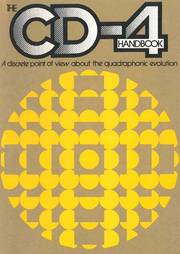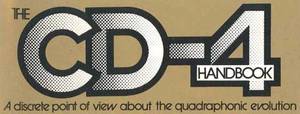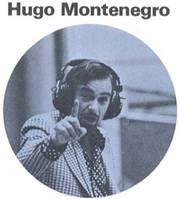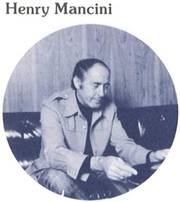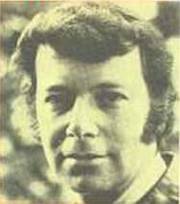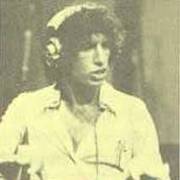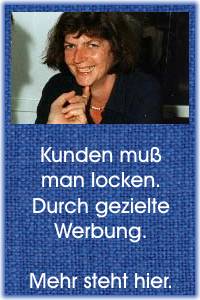Das CD-4 handbook aus dem Jahr 197? - also von wann ?
Dieses englische CD-4 "Handbook" ist laut Rückseite von 4 Firmen unterstützt worden, weil sie gemerkt hatten, wie ihnen "die Felle wegschwammen".
Die Entwickler und Firmen hinter SQ und QS steckten ungeheure Summen in die Werbung und versuchten, den Wettbewerber CD-4 madig zu machen. Da gab es ja auch genügend Schwachstellen, die SQ/QS nicht hatte. Dafür hatten die SQ/QS Matrix Verfechter wieder andere Schwachstellen und zwar gravierendere als CD-4.
Und - wie immer - wird auch hier nur die Schokoladen- seite des Kuchens "gelobhudelt", was das Zeug hält. Viel dumme Sprüche in den Absätzen sind einfach nur gut, aber leider nicht wahr. Es wird nicht nur ein wenig geschummelt, es biegen sich schon die Balken. Denn der (unbekannte) Autor wirft die Magnetband Qualität (der Studiobandmaschinen) immer wieder mit der CD-4 Plattenqualität in einen Topf und das stimmt nun mal überhaupt nicht.
Auf die Abtastfähigkeit der Vinyl-Platte bei mehr als 30 Kilohertz geht der Autor auch nur homöopathisch ein. Selbst die 22 kHz Tiefpassfilter in vielen Phono- Vorverstärkern werden einfach ignoriert, das müsse der jeweilige Hersteller bereinigen. Und von einer deutschen VDE Norm bezüglich Einstrahlfestigkeit bei hohen Frequenzen hatte er auch noch nie etwas gehört.
Aber lesen Sie selbst, wie toll dieses CD-4 Verfahren die Welt begeistert.
Hier in dieser englischen / amerikanischen Version des handbooks sind nur die abweichenden Bilder enthalten. Mehr finden Sie in der deutschen Fassung.
.
THE CD-4 HANDBOOK (etwa aus 1974)
A "discrete" point of view about the quadraphonic evolution. (Original übersetzt : "Ein vertraulicher Blickpunkt auf die quadrophonische Evolution."
Haben Sie es verstanden ?
.
It's time to choose again.
To the audio industry's great credit, critical choices made during the astonishing evolution of high fidelity sound have always been made using uncompromised accuracy of reproduction and greatest creative flexibility as the final standards of judgement.
The first saleable home equipment, for instance, was big and bulky - a difficult marketing problem, to say the least. But that was the only way the industry knew how to provide uncompromised state-of-the-art accuracy and greatest creative flexibility - so big and bulky it was.
When it inevitably came time to choose a single industry method of producing a stereo disc, the system chosen represented the greatest possibility for utmost accuracy and flexibility through two totally separate channels with the lowest crosstalk of information between them. Once that decision was made, "stereo" soon became a household word everywhere.
Es ist soweit - Quadro ist gereift
Now quadraphonic sound has truly come of age. Hardware production and sales are riding a consistently increasing sales curve. Quadraphonic software releases and sales are paralleling that curve. New technological advances are occurring almost daily.
- Anmerkung : Sie sollten bei der Übersetzung in verständliches Deutsch den "quadraphonic sound" mit "Vierkanal-Sound" beibehalten. Die Amerikaner mixen Klangeindruck, Stereo-Perspektive und Hifi-Tonqualität alles zusammen miteinander zu dem Wort "Sound". Dort in USA ist alles "Sound", selbst das alte "Kofferradio" oder das alte Autoradio machen in USA "Sound".
The time has come once more for the sound industry to make another evolutionary decision - to what quadraphonic disc system should its combined technological and marketing efforts be directed ?
- Anmerkung : Diesen Satz habe ich nicht verstanden. Wo ist da die Frage ?
It is a decision that should be made as quickly as possible for the benefit of producer, retailer and consumer alike. A decision that will inevitably determine the future course of high fidelity sound reproduction.
.
- Anmerkung : Aha, also die Entscheidung zum Kauf (unseres CD-4 Systems) sollte schnell fallen,- (denn wir brauchen Ihr Geld - dringend.)
.
That's basically why we've put this book together. We'd like you, the concerned individual who'll be directly affected by that decision, to fully understand what we believe that choice must be:
The CD-4 Compatible Discrete 4-channel disc system - the "Quadradisc."
Why? Because Quadradisc is the only genuine 4-channel disc system. Because no other system offers the pure accuracy of reproduction and vast creative flexibility of Quadradisc. And it's just as simple as that.
We invite you to step into the world of the CD-4 Quadradisc. Read about it, learn about it, listen to it. Then critically compare it to any of the other proposed systems.
If history means anything at all, Quadradisc will become the key that opens up the next great dimension in sound.
.
INHALT - Where it's at :
.
- PAGES 3-5
Just for the record. - A quick look at the disc from Thomas A. to present day. - PAGES 6-9
The quadraphonic multiple choice game. The quad disc systems and how they basically work. - PAGES 10-11
Will the real 4-channel disc please stand up? A closer look at the CD-4 Quadradisc. - PAGE 12
Getting hooked on CD-4. - What you need and how it's connected. - PAGE 13
CD-4 is in the air. A bit about quadraphonic FM. - PAGE 14
Suggested speaker placement for CD-4 listening. - PAGES 15-16
"I've already chosen." - Some choice words from people who already know. - PAGE 17
The CD-4 roster. - The people who make the equipment you'll use. - PAGES 18-20
The sound on CD-4. - Quadradisc artists and albums - PAGES 21-22
Coming to terms with quadraphonic. - A glossary of quadraphonic terminology - PAGES 23-24
Q & A X4. - Most commonly asked questions and answers about the 4-channel situation. - PAGE 25
More about CD-4. Where to get the latest intormation.
.
Just for the record.
Not even the fertile and visionary mind of Thomas Alva Edison could have imagined the lull scope of what he'd started when he first captured sound on a tiny tin foil cylinder. In less than a single century, that initial permanent "record" of sound reached the ears of the world and changed the life style of its people. It became the sound of an ever-expanding industry from which millions make their living. The sound of the rich gift of music and entertainment we find at our fingertips today.
Like any developing thing. Edison's amazing little cylinder was destined to go through a lot of changes. First it was flattened into a disc made of wax. This provided a much easier recording medium to work with, and eliminated much of the background noise inherent in the cylinder.
Wax soon gave way to the durability of shellac, and the 78 RPM record Grandma used to play on her windup was born.
Then came micogroove (1948).
Now an entire symphony could be recorded on one disc with far better fidelity than ever before. Equipment manufacturers quickly created mechanical and electronic gear equal to the task.
The "LP" ushered in the era of "high fidelity." The 45 RPM single play "doughnut" made its entrance in the early fifties, and hundreds of musical performers rose to stardom or melted inlo obscurity on its revolutions.
But the next real milestone in the art of sound reproduction was the creation of a thing called "stereo". Up until then, everything was recorded on a single track (Mono) and played back through a single channel - just as though you had only one ear. But with the development of multi-track tape equipment, sound was no longer limited by the unavoidable flatness of monaural reproduction. The ability to record and reproduce 2-channel source material raised the curtain on an immensely wider stage of musical realism and creativity.
Yet stereo sound didn't make its big impact until a stereo disc system was standardized.
.
The "stereo LP"
The "stereo LP", with a totally separate channel pressed into each wall of its tiny grooves, was a great new tool for creative technician and artist alike. Multi-channel recording techniques provided far greater accuracy and depth in the final 2-channel master.
New disc raw materials and pressing techniques were developed that increased durability, expanded frequency response and assured the kind of complete channel separation necessary for each speaker to reproduce a proper sound field.
FM stations rapidly adapted to stereo multiplex broadcasting (1961-1963) - a system in which two separate channels are sent out on the carrier and sub-carrier of a radio wave Equipment manufacturers once again rose to the occasion, and a whole range of home gear designed to take full fidelity advantage of the higher quality source material soon appeared on the shelves of the local hi-fi store.
After a few years of learning what this new tool could do, the technician and the artist formed a creative alliance that turned on the world to a two-eared era of electronic Imagination. It was the birth of a musical dimension that only the alliance of artistry and technology could have fostered.
"Quadraphonic" 4-channel sound.
Today, another dimensional word has burst into the world of sound. "Quadraphonic" 4-channel sound. Sound that surrounds. Sound that lifts the listener up and drops him right in the middle of things. Sound with a whole new experience of involvement. Sound that many experst believe is a greater advancement over stereo than stereo was over monaural.
But there was an intrinsic problem with quadraphonic sound reproduction. With 4-channel tape, everything was easy. Simply record four separate channels on the tape, and play it back through four separate channels - the discrete recording process now being used on quadraphonic tapes and cartridges. But what about the prime vehicle of sound for the home listener - the record? There were only two walls on the groove, and quadraphonic sound demanded four channels of information.
.
But what about the record?
The first and simplest solution was to take four channels of recorded material, scramble it in a predictable pattern into two channels, then unscramble it into four channels again with special electronic circuitry in the playback equipment. This "matrix" method worked to a degree.
The enhancement it provided to otherwise straight stereo source material was clearly audible, and as a stereo enhancer, matrix 4-channel reproduction should provide the home listener with a lot of musical pleasure in the future.
But even with the best electronic matrix unscramblers ever devised, something was always lost in the 4-2-4 translation. The result was loss of the defined separation necessary for accurate reproduction of the 4-channel master tape. The only real solution was to find a way to put four totally isolated, complelely separate channels on an LP disc. Somehow.
Wir haben das Problem gelöst - in Japan
The idea captured the fancy of a team ot Japanese engineers. Unable to resist the challenge, they put their full efforts behind the massive research and development program it takes to meet that kind of challenge. Using compatibility (ability to perform equally as well on stereo equipment with the equivalent durability of a stereo record) and discreteness (the maximum separation of information on each of the four channels) as their basic standards of performance evaluation, they developed the revolutionary CD-4 "Ouadradisc ".
CD-4 means "Compatibility" and "Discreteness" on all 4 channels. The first and only quadraphonic system that combines uncompromised accuracy of reproduction and unlimited creative flexibility on a disc. Now it's inevitable.
The sound of the future will have four sides. CD-4 welcomes you to all of them.
The quadraphonic multiple choice game.
Whatever initials you christen them with, there are basically only two quadraphonic disc systems on the market - matrix and discrete.
Matrix systems may be SQ, QS, or in some other form. The only discrete system is : CD-4. Each has its own philosophy and approach to 4-channel sound reproduction. And each has certain advantages and disadvantages.
But before any valid comparison can be made, a firm understanding of the basic techniques of each system is an absolute must. We offer the following capsulized descriptions and detailed illustrations towards that end.
The 4-2-4 Matrix system
Mixed sound after interchange over each channel.
Four channels of discrete Information are mixed (encoded) into two channels, then unmixed (decoded) into four channels during playback. Note the "lane changing" of information that inevitably occurs during the 4-2-4 process.
The 4-4-4 Discrete System
Pure and unmixed sound from start to finish.
By recording the sum at front and rear channels in the audible region and the difference between front and rear channels as modulated FM signals in the 20-45 kHz region, four discrete channels can be maintained from master tape to loudspeakers - yet remain fully compatible with mono or stereo playback equipment.
The Matrix System - what is it ?
In theory, the matrix system appears to be the simplest and most logical approach to the quadraphonic disc. Just take four separate channels of information, electronically scramble them together in a predetermined pattern or matrix, and put this 2-channel matrix on a standard stereo disc. Then all you had to do was develop a device that could decode that matrix during playback and restore the sound as closely as possible to the four discrete tracks of the original master tape.
Sounds easy enough. No major changes necessary in record material, cutting and pressing techniques or FM broadcasting. Just some extra electronic circuitry, four speakers, and you were ready for the quadraphonic record.
But one problem - and apparently an unsolvable one - flaws the matrix theory. Once those (our original discrete channels are mixed together, there is no known way to recover them exactly as they were.
"4-2-4" läßt Informationen veschwinden
What happens during the "4-2-4" process is a blending of information between channels, sometimes to the point where some channels become nearly indistinguishable from others. This mingling of information is called "crosstalk", and the result is varying degrees of separation loss.
Unfortunately, even the best matrix decoders with sophisticated phase shift and logic circuitry can't prevent crosstalk, nor can they provide the kind of channel separation we've come to expect from stereo.
A decent stereo system has channel separation of around 20-25dB. But unless your matrix quadraphonic home equipment has full logic circuitry (and less than 20% of the products made today do), channel separation can drop to as low as 3dB during the matrix decoding process.
That's very close to being monaural sound, and far less than necessary for acceptable reproduction of the quadraphonic sound fields portrayed on 4-channel masters.
Where the matrix system really shines, however, is in its ability to enhance standard stereo records. Anyone who's heard their favorite stereo LP played through a good matrix system will testify to that. For that reason alone, it's an advantage to have matrix circuitry in your quadraphonic playback equipment.
The Discrete System
The discrete approach to the quadraphonic disc represented an entirely different point of view right from the beginning. Unwilling to accept the limitations of existing technology, discrete-devoted engineers recognized the pure necessity of four completely separate channels on a disc - and then set out to produce one.
First, they looked at the signal being put on the standard 45-45 Grad stereo record groove - up to 18.000 Hertz on better records.
But why, they reasoned, must that be the upper limit? Available techniques permitted pressing up to 45,000 Hertz on the groove wall.
Cartridge lechnology was such that a cartridge could be produced that would accurately track at such frequencies and higher.
Verwenden wir doch die 20-45,000 Hz Region auf der Platte
Then why not record the sum of front and rear channels in the normal audible region and the difference between front and rear channels as ultrasonic modulated FM signals up in the 20-45,000 HZ region?
That way, the resulting disc would be fully compatible with existing stereo equipment, yet provide four totally discrete channels of inlorrnation with the proper playback equipment. Since the two signals are so far apart in the frequency spectrum, the possibility of interference would be eliminated.
Then all that was needed was some good FM demodulation circuitry in the playback equipment - the kind that's been used in FM stereo multiplexing for years - and a stylus capable of delivering the ultrasonic frequency response required.
Utilizing this new concept, the artist, engineer and record producer would for the first time be able to use the unlimited creative freedom afforded through the discrete channel medium - and the listener would be able to hear everything that creative freedom had to offer with absolute accuracy - all in an amazing new disc.
The result was Quadradisc.
.
Will the real 4-channel disc please stand up ?
A lot of new developments had to take place before the CD-4 discrete Quadradisc process could become a viable concept in the quadraphonic marketplace. A tribute to today's audio technology, all of those necessary developments have been accomplished with the uncompromising concern for accuracy and artistic freedom that has been the very foundation of the discrete disc philosophy.
One of the basic requirements of the Quadradisc, for instance, was to provide the consumer with a product that had at least equivalent durability and performance life of its stereo counterpart.
Das neue Plattenmaterial - ein Vinyl "Compound"
Record companies soon came up with new materials that were significantly harder with lower noise characteristics than ever before possible. This new Quadradisc compound actually adds to performance longevity up to 50% and will soon be used for producing top quality stereo records.
Several cartridge manufacturers designed and now produce fine ultra-broadband cartridges fully capable of reaching the upper limits of the quadradisc - and beyond. A whole new shape in styli - the Shibata type - was conceived and perfected. This new super-stylus meant greatly increased frequency response and significantly decreased record wear.
Extra-precision cutting, mastering and pressing techniques were required and implemented - another quality advancement that will eventually spill over Into stereo products. Demodulation systems were designed that deliver four discrete channels of sound equivalent in separation to some of the finest stereo recordings - without adding noise or coloration of its own to the signal.
The Quadraphonic Sound Field
Now the CD-4 Quadradisc is the potent force it deserves to be in the audio marketplace. Artists and producers who've used the system extol its virtues and proclaim it a creative tool destined to spawn new vistas of musical involvement. More and more record companies are producing their top talent on CD-4 Ouadradiscs. More and more hardware manufacturers are including CO-4 demodulation circuitry in their 4-channel products, less and less are providing the more costly full logic matrix circuits.
Will the real - and only - 4-channel disc please stand up ?
Thank you. Quadradisc.
Getting hooked on CD-4.
Getting hooked on CD-4 is a lot easier than It may sound. Begin with a basic 4-channel playback system - a good turntable, a 4-channel receiver (or amplifier), and four speakers closely matched in efficiency that please your listening preferences.
Add to the turntable one of the many excellent cartridges designed
for CD-4 disc reproduclion, preferably with the Shibata or equivalent stylus. Now add a CD-4 demodulator, externally or built into the turntable or quadraphonic receiver.
Now pick out some of your favorite musical artists from the evergrowing Quadradisc list. Then take them home, listen to them, and as one Quadradisc reviewer so graphically slated, hear "a sonic diamond that really sparkles !".
If you haven't already experienced the indescribable surround of sound provided by the CD-4 Quadradisc, we can only suggest that you ask your favorite hi-fi dealer to demonstrate it to you. If his equipment is properly arranged, it won't take long to convince you that we're now living in the year of 19...... CD-4.
.
CD-4 is in the air. (gemeint ist der UKW-Rundfunk)
As it was during the initial development of stereo, the FM broadcasting medium is lagging behind the rest ot industry in its commitment to 4-channel. This is not to fault the FM broadcasters, however. To the contrary, it is prudent policy on their part.
The reasons are simple when looked at through the perspective of the station owners and operators. Although some stations utilize tape source material, most FM programming is derived from disc. That means the purchase and installation of special quadraphonic broadcasting equipment designed to utilize the source material available on quadraphonic discs.
But before the FM broadcaster is willing to commit himself to the expenditure and format alterations required to make the changeover to 4-channel transmission, he must be totally satisfied with the answers to some very important questions. For instance, will there be enough quadraphonic source material to fill his huge appetite?
Wie könnte es funktionieren ?
What will the standard quadraphonic disc process be? What kind of equipment will he need to assure good quality quadraphonic transmission and how expensive is it? Will there be enough people in his listening audience who have the proper 4-channel receiving equipment to make this a profitably wise venture?
Some of these questions have already been answered. The rapidly expanding library of quadraphonic software and the increasing sales of quadraphonic hardware will assure him of material to play and an adequately large audience to listen to it.
Other questions, however, still remain unanswered - but not for long. A long series of comparative tests using the discrete disc and all of the newly developed discrete 4-channel transmitting systems is in its final stages. It is fell by most broadcasters that once the results of this test are fully compiled, an FCC decision on the standard method of quadraphonic broadcasting would be less than a year away
One final observation.
It is significant to note that all systems being tested are discrete, using CD-4 Quadradiscs and discrete 4-channel tape as the prime source material.
That should tell you something is in the air.
- Anmerkung : 4 Kanal Rundfunk war weder in USA noch in Europa bei den Radiosendern jemals in der ernsthaften Diskussion.
.
Suggested speaker placement for CD-4 listening
Your room furnishings were probably arranged before you joined the ranks of quad high fidelity music listeners. Here are some tips and insight to get the most from your new listening experience. First remember that each set-up is as unique and personal as ihe individuals who listen toil. Don't be afraid to experiment.
Moving a speaker toward a corner increases the bass, just as in stereo. If you hear too much bass for your taste move the speaker away from the corner, or get it up off the floor by placing it on the stand or mounting it on the wall.
The first step is to decide where you will sit for your most serious listening - perhaps a favorite chair or sofa. Then locate the front speakers directly across from the listening sofa just as you would if the system were only a stereo. Now place the rear speakers in back of you if possible, remembering to keep the rear left on the same side as the front left.
Kleine Kompromisse müsste man schon eingehen
It often occurs that the desired listening seats are on a sofa which is against a wall, making it impossible to move the speakers in back of you. In this case if you simply put the speakers against the wall on each side of the couch, you will be literally listening to the back of the speaker. This is hardly ideal. Hanging the speakers up high toward the ceiling or putting them at the extreme left and right with a slight angle will improve the depth of sound.
Although quad requires a little more attention to speaker placement than stereo, the end listening result will be a much larger listening area than you can hope for from stereo.
Und jetzt beginnt die Lobhudelei :
"I've already chosen." - "Ich habe mich entschieden."
Advocates of the CD-4 Compatible Discrete 4-Channel Disc are an unusually enthusiastic bunch. Because once anyone involved with the art of sound reproduction - be it artist, producer, engineer or industry leader - becomes involved with CD-4, avid enthusiasm for its uncompromised sonic accuracy and unlimited creative flexibility is a natural result.
Listen to what a few of (his growing group of CD-4 devotees have to say about the discrete disc. Once you do, you won't find it difficult to understand why CD-4 has become the overwhelming choice of professionals who won't accept anything less than the very best in sound reproduction.
Hugo Montenegro - "CD-4 means freedom".
"The fact is that 4-channel sound has opened up a new world of creativity for the composer/arranger/producer. We now have the freedom to surround the listener with any sound environment our imaginations can conceive. The freedom to locate a sound anywhere within the environment. And the freedom to manipulate and move sound in any direction.
"But these new freedoms can only exist - and be utilized, if the final product can be faithfully reproduced on disc without any limitations. Of the several quadraphonic disc formats on the market, in my opinion, only the compatible discrete 4-channel record meets these criteria. That's why, to me. CD-4 means freedom."
- Anmerkung : Wer hat ihm diesen Schwachsinn in den Mund gelegt ? CD-4 würde Freiheit bedeuten. Die Künstler hören ihre soeben gemachten Aufnahmen allermeist direkt in den Kontrollräumen in den Aufnahme-Studios vom professionellen Mehrkanal-Magnetband ab und sind natürlich begeistert. Von Quadro-Platten abgehört Zuhause sieht das dann ganz anders aus.
.
Henry Mancini - Quadraphonic the new sound.
"Quad shouldn't be compared to stereo," says Mancini.
"It's a whole new listening experience, a real wrap around sound. Actually, it's an extension into the home of the new techniques that have been developed for wide-screen movies, mixed media shows and the new environments in which the listener is completely immersed in sound. It's amazing what it does for any kind of music, from Mozart to Sousa to Jazz. I have my own system in my billiard room in Mallbu with four speakers mounted in corners. With Sousa in quad, the bold lines of the writing and the bright colors of the instruments come jumping out of the speakers. I get that 50-piece band marching right into the room."
.
Jac Holzman
"Our commitment to CD-4 was the result of almost two years of exhaustive research by the Warner/Electra/Atlantic engineering team. Involved was a scrupulously detailed evaluation of all competing quad systems. Only then did we make our decision," says Jac Holzman, Senior Vice President, Warner Communications and Chairman Quadraphonic Planning Group of the Warner/Elektra/ Atlantic Labels."
Why CD-4 ? The WEA labels are blessed with an awesome roster of talent. Frank Sinatra, Carly Simon, Gordon Lightfoot, Aretha Franklin, The Doobie Brothers, Bread, Deep Purple, Alice Cooper, Mystic Moods, Seals and Crofts. Judy Collins.
Artists of this magnitude demand the ultimate in state-of-the-art recording technology. They deserve the only 4-channel disc that encourages full creative freedom without limitation
or compromise. "And, they'll settle for nothing less. "Our software efforts, when added to comparably vigorous thrusts by RCA and other important CD-4 recording companies, provides continuing dramatic evidence of our far-reaching commitment to CD-4. Everyone, from hardware manufacturer to retailer to customer can be assured there will always bo CD-4 product. "The public gets a fair deal, too. With CD-4. the record buyer - with his quality equipment - doesn't have to settle for a disc that is 'less discrete* than the quad tape he plays over his more modest car system. "Today's CD-4 discs stand toe to toe with any stereo product. In frequency response, total playing time and in physical durability. And. they play true quad."
.
Richard Perry
a man who knows what he's talking about talks about CD-4:
Richard Perry is one of the main men in the music business today. Not only is he the brilliant independent producer for Ringo Star, Carly Simon, Barbra Streisand, Harry Nilsson and Ella Fitzgerald, he's also a twice-named producer of the year with 10 gold albums and 5 gold singles to his name. In other words, when Richard Perry talks about
CD-4, he knows what he's talking about.
"I think I can safely say I've been involved with virtually every kind of music that's being produced today. The more we get into four-channel recording, four-channel mixing, and creating special effects, the more we want the most faithful reproduction of our efforts. I'm confident when I say that CD-4 is the truest reproduction there is."
"I'm concerned with the total musical environment I create. I want my music to be as exciting visually as it is musically. The only way to achieve this potential today is to do the disc in CD-4."
"One of the highest moments I've ever experienced in a studio was the first time I heard my work back in four-channel. What I heard really made me believe that CD-4 is the only way to go."
The CD-4 roster. (der zukünftige Dienstplan !)
It doesn't make any difference how good the quadraphonic disc recording process is. If the audio hardware manufacturers don't produce the equipment you need to hear it in all its glory at home, it isn't worth a hoot. But again, that takes a major commitment on the part of the hardware manufacturer. It means new designs, new tooling, new models, new marketing direction. It means that he has to believe in the technical and sales viability of the product strongly enough to invest the many thousands of dollars required to make that kind of production and marketing conversion.
That's why we're exceptionally proud of the growing roster of hardware manufacturers who have joined the CD-4 ranks. Today, there are more than 25 CD-4 cartridges to choose from. And at latest count, more than 50 electronic equipment manufacturers include CD-4 demodulation capabilities in their quadraphonic products - over 5 as many as those who provide full logic matrix circuitry. An absolute must, by the way, for matrix performance that even begins to approach the separation quality of CD-4 and then only under certain performance conditions.
Look through the following list of hardware manufacturers who think enough about the potenlional of CD-4 to make their equipment completely ready for the significant marketplace it represents.
You might come to the conclusion that most hardware manufacturers have already made their choice, too.
.
Jetzt folgen die Namen der Firmen und Hersteller
... die sich alle zu CD-4 "committed" haben sollen. Mit dabei sind auch Firmen, von denen wiri inzwischen wissen, daß sie immer (nur) Auftragsfertiger waren und nie unter eigenem Namen aufgetreten waren. Hier sind sie mit aufgeführt - jeder Name zählt.
.
Equipment Manufacturers
.
- AKAI Audio World
- B&O
- B.G.W.
- Brother (was stellen die her außer EDV Technik)
- Clarion
- Cybernet
- Crown Radio (das sind lowcost Bastler)
- Denki Onkyo
- Electrohome
- Fisher
- Foster
- General (ein Lowcost Anbieter)
- Gladding Claricon
- Harman Kardon
- Heath
- Hitachi
- JVC
- Kenwood
- Kokusai Musen
- Magnavox
- Marantz
- Miida
- Mitsubishi
- Muntz
- NEC
- Nikko
- Nippon Columbia
- Noresco
- Onkyo
- Panasonic
- Philips
- Pilot
- Pioneer
- Plessey
- Quadrasonics
- RCA
- Roland
- Rotel
- Sanyo
- Sansui
- Sharp
- Sherwood
- Shin Shirasuna Denki
- Sonab
- Standard
- Superscope
- Sylvania
- Tanasawa
- Technics by Panasonic
- Terulron
- Toshiba
- Union
- Wells Gardner
- Yamaha
.
Cartridge Manufacturers
.
- ADC
- Audio Technica
- B & O
- Elac
- Empire
- Grace
- Grado
- JVC
- Micro Acoustic
- Ortofon
- Panasonic
- Pickering
- Pioneer
- Stanton
- Toshiba
.
Many of the world's great musical artists have already made their CD-4 debut. We think it's an impressive list and presented here for your convenience.
However, many new CD-4 albums featuring the most popular artists of today are scheduled for release after the printing of this publication.
For the most current list of CD-4 Compatible Discrete 4-Channel Discs, check with your local record retailer.
- Anmerkung : Dieses Versprechen konnten die Verfasser dieses Handbuches nicht mehr einhalten. Vielmehr als diese Platten sind nicht erschienen.
.

